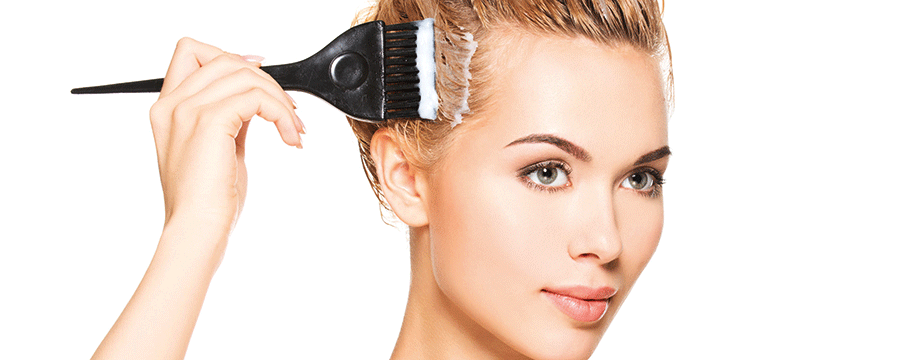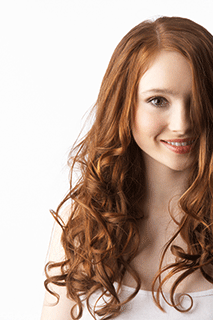The natural haircare guide

Love your locks with these expert tips from Imelda Burke
We often talk about hair issues when what we should really be considering is the scalp. Often the root cause of hair problems comes from the health of the skin on our head and of course our diet and lifestyle. Too oily, lack of oil, itchiness and irritation often indicate the condition of the scalp.
Our scalp should really be considered an extension of our face although we rarely treat it with as much care. It is also one of the most absorbent parts of our body and yet we treat it like it is the most resilient. The scalp is highly sensitive and, if you are a fan of styling your hair daily, is probably one of the areas that gets the most products thrown at it – shampoo, conditioner, styling serum, finishing treatments, hair spray and oils, and that’s after you have coloured your hair and before it’s dried, styled and straightened.
The scalp also produces sebum, which protects the protein structure of the hair so that it doesn’t splinter. But sebum, as it does on the skin, collects dirt and scalp flakes, so the health of the hair and scalp is linked to sebum production.
Foaming shampoos can affect the balance of sebum on the scalp, drying it out or, as with sodium lauryl sulfate, even making the skin more permeable. Just like skincare, haircare products contain synthetic chemicals we can skip altogether. Sodium lauryl sulfate, phthalates and cocamide DEA all crop up in haircare, as do fragrance and parabens, but it is worth noting several more haircare specific ones.
Ingredients to avoid
Sodium hydroxide
Used in high concentrations as a hair straightener and for setting permanent waves, overexposure is corrosive to tissues and mucous membranes such as in the eyes, nose and throat, which is why your hairdresser might be wearing a mask while doing your hair. Concentrated exposures frequently result in extreme and severe irritation, swelling and acute dermal reactions.
Looks like this on a label: caustic soda, sodium hydrate, sodium hydroxide.

Silicones
There are various types of silicone and silicone-derivative ingredients used in haircare products. These are primarily used as surface sealants to coat the hair and make it smooth and shiny – giving the illusion of healthy hair. If you are prone to spots around the hairline, avoid silicones as they might contribute to trapping moisture, sebum and bacteria inside pores. There are some natural alternatives, which give shine and nourishment, including plant oils such as jojoba and argan. Another is Crambe Abyssinica oil, which has a unique molecular structure that gives hair a smooth finish without being overly oily.
Looks like this on a label: cyclopentasiloxane, cyclohexasiloxane, dimethicone and phenyl trimethicone.
Paraphenylenediamine (PPD)
Used in hair colours, this ingredient will be in higher concentrations within permanent dyes. It is the main reason you want to insist on doing a patch test before having your hair dyed, as exposure has been found to cause mild dermatitis, including redness, pain and swelling. When in contact with the eyes, it could possibly cause swelling of the eyelids and blurred vision. Inhalation is not great either and associated with coughing, headaches, dizziness and trouble breathing. More severe reactions can result in urticaria (hives). Also avoid forms of aminophenol and diaminobenzene – banned in the EU; they may not be elsewhere.
Looks like this on a label: Para-Phenylenediamine; PPD; P-Phenylenediamine; 1, 4 diaminobenzene; 1, 4 phenylenediamine; P-Aminoaniline.
Whilst PPD is approved for using safely in hair colorants, it is not allowed in the EU for use directly on the skin. However consumers may encounter so-called temporary ‘black henna’ tattoos at fairs and/or in holiday regions around the world. These temporary ‘black henna’ tattoos, which contain a high amount of PPD, may also cause long-term damage by making your skin more susceptible to reactions.
Formaldehyde
A key ingredient of the infamous Brazilian blow-dry straightening treatment, elevated exposures have been associated with irritation and oedema (swelling) to the pulmonary system and mucous membranes. Overexposure also irritates the eyes, nose and skin and repeated exposures have been associated with an allergic response in some people. This is complicated though as ‘formaldehyde’ is rarely written on the label and some ingredients (including timonacic acid, dimethoxymethane, or diazolidinyl urea) may release it when in contact with heat.
Looks like this on a label: Looks like this on a label: methylene glycol, such as formalin, methanol, methanediol or formaldehyde monohydrate.
Resorcinol
A common ingredient in hair colour and bleaching products, it has been found to be a skin irritant and is a frequent cause of hair dye allergy.
Extracted from The Nature of Beauty by Imelda Burke (Ebury, £20).
Read previous Your Look articles here...
Read articles from our latest issue here...